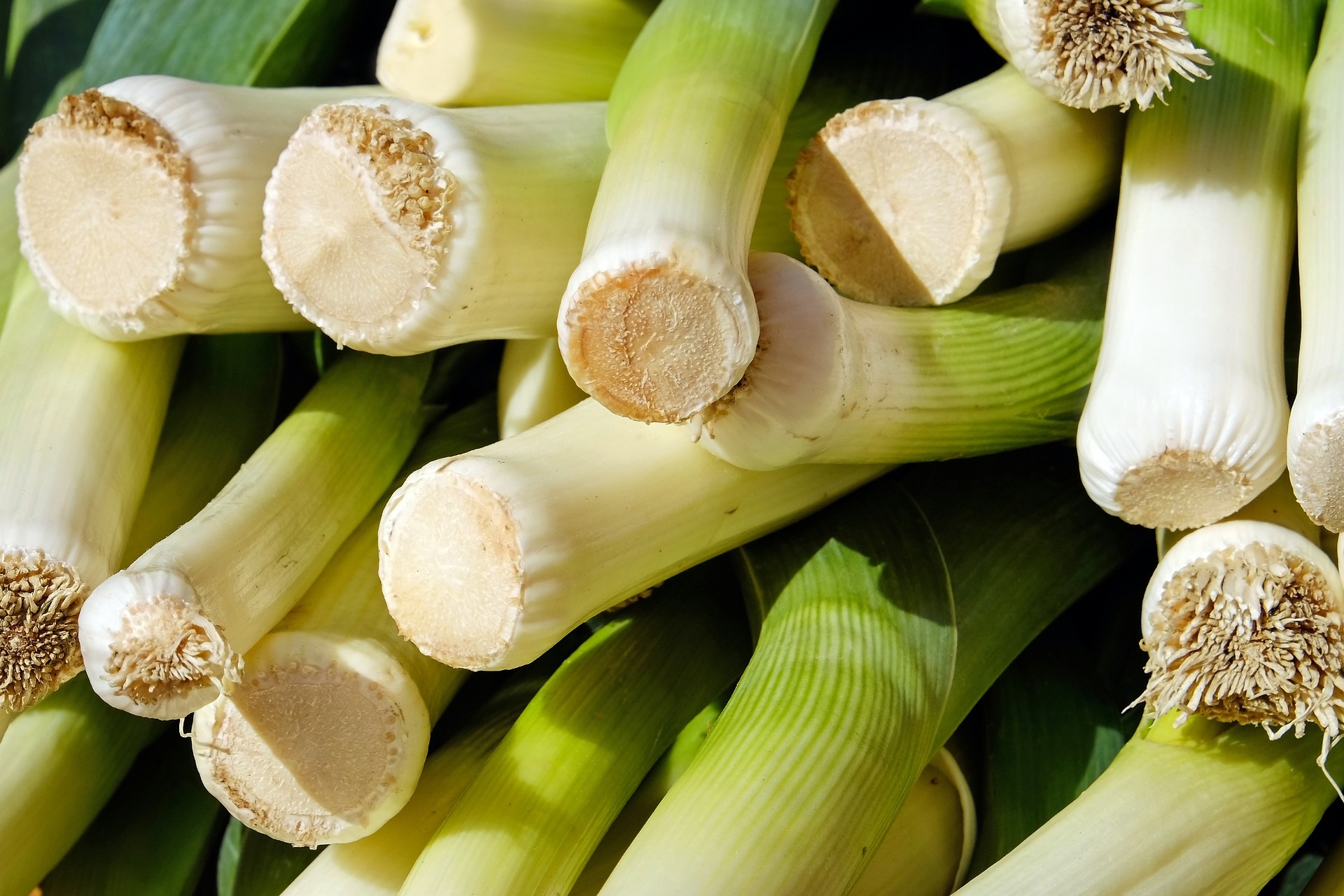Perhaps the noblest Allium, which is both sweeter and milder than an onion and a space saver in the garden, is the humble leek. Learn to plant, grow, care for, and harvest leeks in your own garden so that you have a generous supply for winter comfort food and summer salads!
About Leeks
We love leeks! This sweet cousin of the onion is a hardy, no-fuss plant that is planted in winter or early spring and unbothered by frosts, hail, and storms.
Leeks are a member of the genus Allium, like onions, shallots, garlic, scallions, and chives. Although they may look like an overgrown green onion, they are a different species, Allium porrum, sometimes also called A. ampeloprasum. Leeks have flat leaves and don’t make a much of a bulb.
Leeks are hardy once established, and many varieties can be left in the garden even after your frost dates and harvested as needed all fall. Leeks can be harvested over a long period if you choose the right mix of varieties. Varieties described as early-season leeks will be ready in time for autumn, while mid and late-season leeks can be harvested through the winter and into spring.
If you’ve never had leeks, they’re a more mild onions that have a sweeter flavor than regular onions. In recipes, leeks may be substituted for onions and, unlike onions, can be chopped and frozen for use in the winter after you run out of your own onions.
What most people consider the edible portion of the leek is the white or pale green main stem, which is actually not a stalk but a bundle of leaves. However, the entire plant—minus the roots—is edible. While the white and light green parts are commonly cut up and used, even the tougher green tops (called the flag) are edible and make a great addition to your stocks and soups for flavoring.













